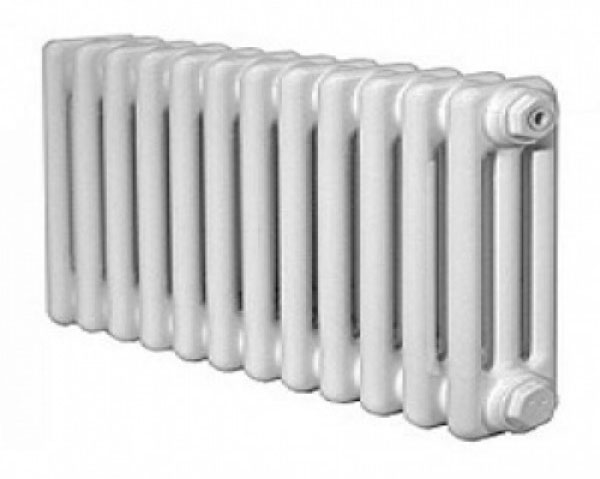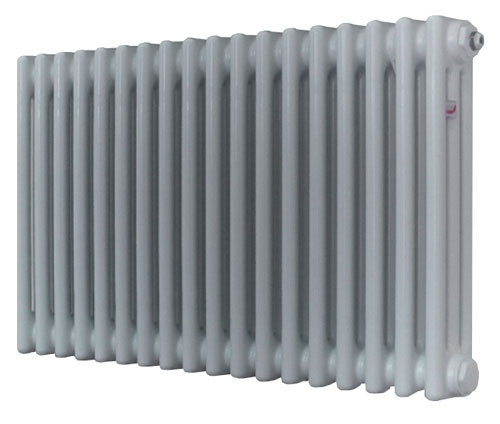The special climatic zone in which most of our compatriots live and the conditions of a long winter suggest a reverent attitude to various systems and heating elements. One of such items, from the quality of the state and the characteristic features of which the comfort and warmth of the room depends, are radiators or in a simple way - batteries.

Content:
Steel radiator which company choose
Radiators are different and they are divided into types according to the material from which they are made:
- cast iron;
- aluminum;
- bimetallic;
- steel.
The most common, due to its low cost, high heat transfer and sturdy designer look, are steel radiators. After reading the article, everyone will be able to learn about the most popular steel radiators in the domestic market and their characteristic features.
The range of steel heating elements offered to a potential buyer in the market is wide and diverse. They differ in size, price, design and place of manufacture.
Among the companies that have earned global prestige, producing steel heating radiators, can be identified:
1. Kermi
This is a German company that creates a diverse range of steel radiators using its own patented technology Therm X2. They are able to work in both single-pipe and two-pipe heating system.
2. Purmo
The Finnish company that manufactures steel radiators of the middle price class of the highest class steel.
3. Arbonia
German company that produces radiators of various shapes and colors of medium and premium class.
4. Zehnder
The German company that manufactures high-quality heating radiators, which in their characteristics are superior to expensive bimetallic.
5. OJSC "Mechanical Plant", St. Petersburg
Russian manufacturer of steel radiators, which has been manufacturing products since 1960.
6. JSC NITI PROGRESS Izhevsk
Izhevsk company produces steel radiators of the most modern design and high quality.
Steel heating radiators of all manufacturers are high-efficiency devices that withstand pressures up to 13 atmospheres.
Top panel radiators
Panel radiators are two or more pressed metal sheets in which special channels are made through which the fluid flows. The panels are interconnected by special connections.
Kermi FTV (FKV) 22 300

Wall mounted radiator from Germany. It combines a heating metal panel through which a fluid circulates and a convection element located at the back to increase heat transfer. One radiator is able to heat an area of from 5 to 38 square meters. m. Working pressure - 10 bar.
The main advantages:
- German workmanship;
- increased heat emission and efficiency;
- combines heating of radiation and convection effect;
- the thickness of the radiator body is minimal and is only 10 cm;
- esthetic appearance.
The main disadvantages are:
- no factory settings for the activation of the convection panel.
Purmo Compact 22 500

Steel panel radiator from the manufacturer from Finland, designed for heating any residential and industrial premises with a pressure in the system not exceeding 10 bar. In the production, innovative technologies have been applied in the form of creating low-carbon alloy steel from which the panels are made, and a special design of the radiator, in which the battery heats the space, not the wall.
The main advantages:
- increased heat emission and efficiency;
- combines radiation and convection effects;
- esthetic appearance and modern design.
The main disadvantages are:
- radiator sensitivity to coolant quality.
PRADO 22 500 600

One of the best Russian panel radiators, which is able to provide warmth and comfort in the room. Maintains the pressure of the heating system, not exceeding 9 bar. In addition, the radiator is made in a modern style and organically fit into the interior of any room.
The main advantages:
- The optimum ratio of price and quality;
- high operating temperature;
- special powder coating that increases heat transfer;
- the possibility of removing the radiator without emptying the system;
- a light weight;
- modern design.
The main disadvantages are:
- with sudden changes in temperature micro cracks appear on the paintwork.
Purmo Ramo Compact 11 500

Small and convenient heating radiator, the thickness of which does not exceed 6.2 cm. Made of low-carbon cold-rolled steel and consists of two panels: radiation and convection. Maintains pressure of the heating system up to 10 bar. The thoughtful arrangement of the panels eliminates the accumulation of dust and dirt. Recommended by experts for an autonomous heating system.
The main advantages:
- compactness;
- increased heat emission;
- maximum performance and durability;
- minimum cost;
- protection from corrosion.
The main disadvantages are:
- sensitive to hydraulic shocks.
Top tubular radiators
Steel tubular radiators are heating devices that are created: in one case from a series of vertical pipes interconnected by an upper and lower horizontal collector, in the other - from sections interconnected by welding. Tubular radiators in comparison with the panel have a large heat transfer, but the price for them is much higher than for panel heating radiators.
Zehnder Charleston 2200 1992

German tubular radiators of the highest quality. At production pass special check for tight connection of sections. They are characterized by increased heat transfer and low convection effect. In addition, even the heavy weight of Zehnder Charleston 2200 1992 does not make installation by one person more difficult.
The main advantages:
- original design;
- maximum heat emission;
- high operating temperature;
- ease of maintenance;
- protection from corrosion.
The main disadvantages are:
- large mass.
Arbonia 3037 370 810

Wall tubular radiator with lateral connection. It is used in heating systems with a maximum pressure of 10 bar and a temperature of 120 ° C. High heat dissipation allows you to warm the room with one radiator up to 40 square meters. m
The main advantages:
- high reliability;
- ease of use;
- high quality enamel coating;
- a large margin of pressure;
- availability of corrosion protection.
The main disadvantages are:
- high price;
- the difficulty of self-installation.
Zehnder Charleston 3057 566 1196

Wall tubular radiator with heat output equal to 570 watts. The device has a modern design and organically fit into any design.
The main advantages:
- presentable appearance;
- resistant to the most aggressive coolants;
- high operating temperature;
- relatively low price;
- manufacturer's warranty.
The main disadvantages are:
- reduction of heat transfer when the temperature of the coolant drops.
Sunerzha Estet 1200

The best design project among tubular radiators produced in Russia. Carries in itself both convection functions, and functions of beam heating. Maximum operating temperature up to 105 ° C.
The main advantages:
- original appearance;
- the possibility of various uses;
- installation in both horizontal and vertical position;
- combination of radiation and convection effects.
The main disadvantages are:
- limited temperature of the heating fluid;
- overpriced.
What steel radiator to buy
Each steel radiator that will be installed indoors is selected on the basis of specific conditions. There are various formulas and electronic calculators, with the help of which the calculation of the need for heating power required for heating a specific floor area is calculated.We will not go into the wilds, but we will tell in simple language where and which steel radiator should be installed.
When choosing panel radiators, first of all it is necessary to pay attention to the number of panels in the case:
1. If you plan to install in a large area, then it is better to purchase a high performance radiator consisting of three ribbed panels. They are distinguished by the most powerful heat output and high cost.
2. Radiators with two panels, but of a large size, are also suitable for a large room. Such radiators have a good thermal capacity and are in the middle price category.
3. Single-row radiators are perfect for a small room. They are the weakest in their heat output. But this will be enough, besides the price for such radiators is much lower.
The determining value in the choice of tubular radiators should be given to the number of sections. The heat capacity of the radiator depends on this:
1. Usually, 2, 6, 8, 14-section tubular radiators are supplied to the market. In order to determine the required number of sections for a specific room, the following formula is used: the area of the room is multiplied by 100 W and divided by the amount of heat transfer power of one radiator section (120 W). The result is the number of sections needed.
2. When choosing a radiator, it is necessary to take into account the presence of such factors as: the presence in the room of walls facing the street, the number of windows, the presence of niches for radiators. In the presence of these factors, the number of sections increases by 10 - 20%.
It will be interesting to friends too







